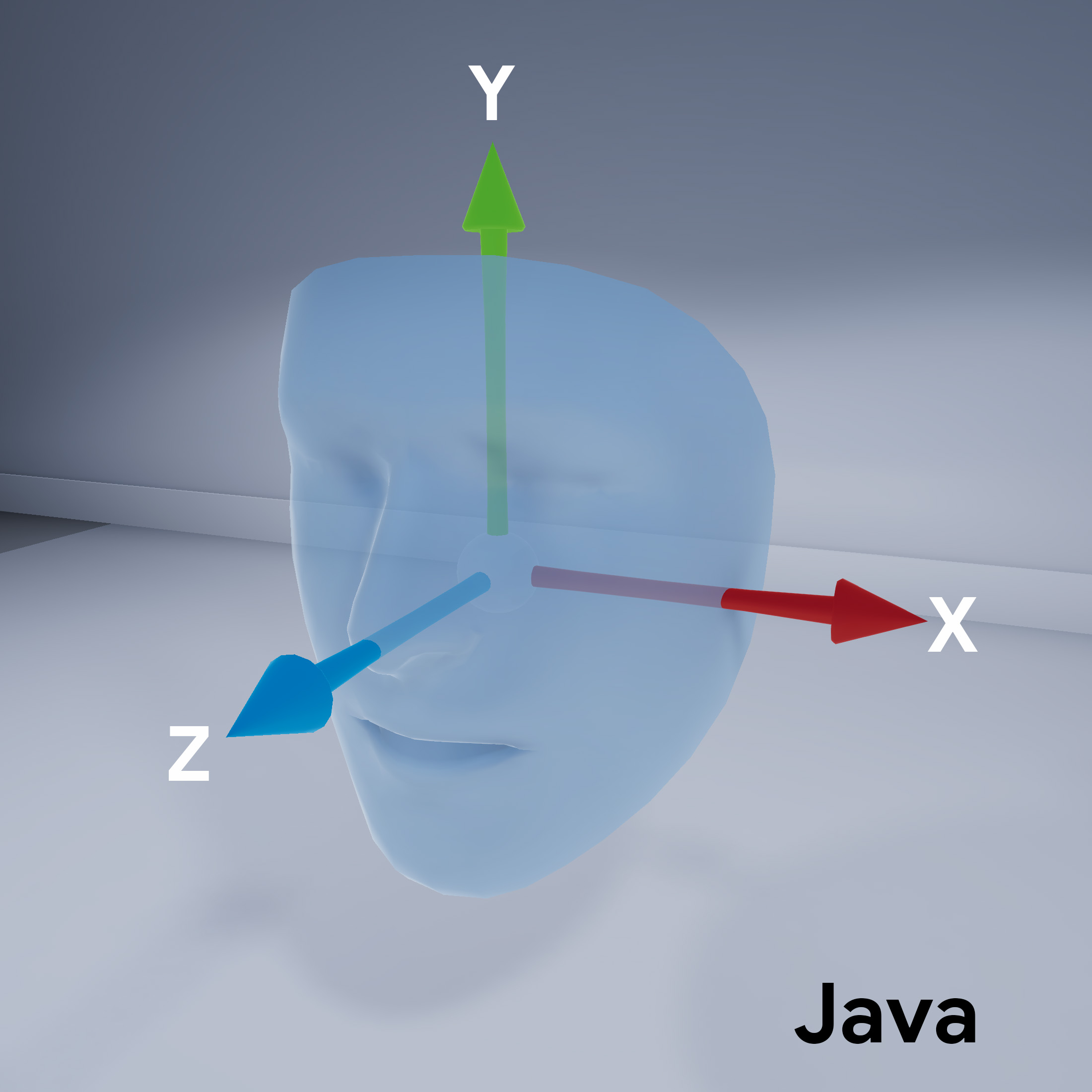تعرَّف على كيفية استخدام ميزة "وجوه معززة" في تطبيقاتك.
المتطلبات الأساسية
احرص على فهم مفاهيم الواقع المعزّز الأساسية. وكيفية ضبط جلسة ARCore قبل المتابعة.
استخدام ميزة "وجوه معززة" في Android
إعداد جلسة ARCore
اختَر الكاميرا الأمامية في جلسة ARCore حالية لبدء استخدام ميزة Augmented Faces. تجدر الإشارة إلى أنّ اختيار الكاميرا الأمامية سيؤدي إلى حدوث عدد من التغييرات في سلوك ARCore.
Java
// Set a camera configuration that usese the front-facing camera. CameraConfigFilter filter = new CameraConfigFilter(session).setFacingDirection(CameraConfig.FacingDirection.FRONT); CameraConfig cameraConfig = session.getSupportedCameraConfigs(filter).get(0); session.setCameraConfig(cameraConfig);
Kotlin
// Set a camera configuration that usese the front-facing camera. val filter = CameraConfigFilter(session).setFacingDirection(CameraConfig.FacingDirection.FRONT) val cameraConfig = session.getSupportedCameraConfigs(filter)[0] session.cameraConfig = cameraConfig
تفعيل AugmentedFaceMode:
Java
Config config = new Config(session); config.setAugmentedFaceMode(Config.AugmentedFaceMode.MESH3D); session.configure(config);
Kotlin
val config = Config(session) config.augmentedFaceMode = Config.AugmentedFaceMode.MESH3D session.configure(config)
اتجاه الشبكة المتداخلة للوجه
لاحظ اتجاه الشبكة المتداخلة للوجه:
الوصول إلى الوجه الذي تم رصده
الحصول على Trackable
لكل إطار. Trackable هو شيء يمكن لـ ARCore تتبُّعه
يمكن إرفاق علامات الارتساء بها.
Java
// ARCore's face detection works best on upright faces, relative to gravity. Collection<AugmentedFace> faces = session.getAllTrackables(AugmentedFace.class);
Kotlin
// ARCore's face detection works best on upright faces, relative to gravity. val faces = session.getAllTrackables(AugmentedFace::class.java)
الحصول على TrackingState
لكل Trackable. إذا كانت القيمة TRACKING،
فسيعرف وضعه حاليًا بواسطة ARCore.
Java
for (AugmentedFace face : faces) { if (face.getTrackingState() == TrackingState.TRACKING) { // UVs and indices can be cached as they do not change during the session. FloatBuffer uvs = face.getMeshTextureCoordinates(); ShortBuffer indices = face.getMeshTriangleIndices(); // Center and region poses, mesh vertices, and normals are updated each frame. Pose facePose = face.getCenterPose(); FloatBuffer faceVertices = face.getMeshVertices(); FloatBuffer faceNormals = face.getMeshNormals(); // Render the face using these values with OpenGL. } }
Kotlin
faces.forEach { face -> if (face.trackingState == TrackingState.TRACKING) { // UVs and indices can be cached as they do not change during the session. val uvs = face.meshTextureCoordinates val indices = face.meshTriangleIndices // Center and region poses, mesh vertices, and normals are updated each frame. val facePose = face.centerPose val faceVertices = face.meshVertices val faceNormals = face.meshNormals // Render the face using these values with OpenGL. } }


